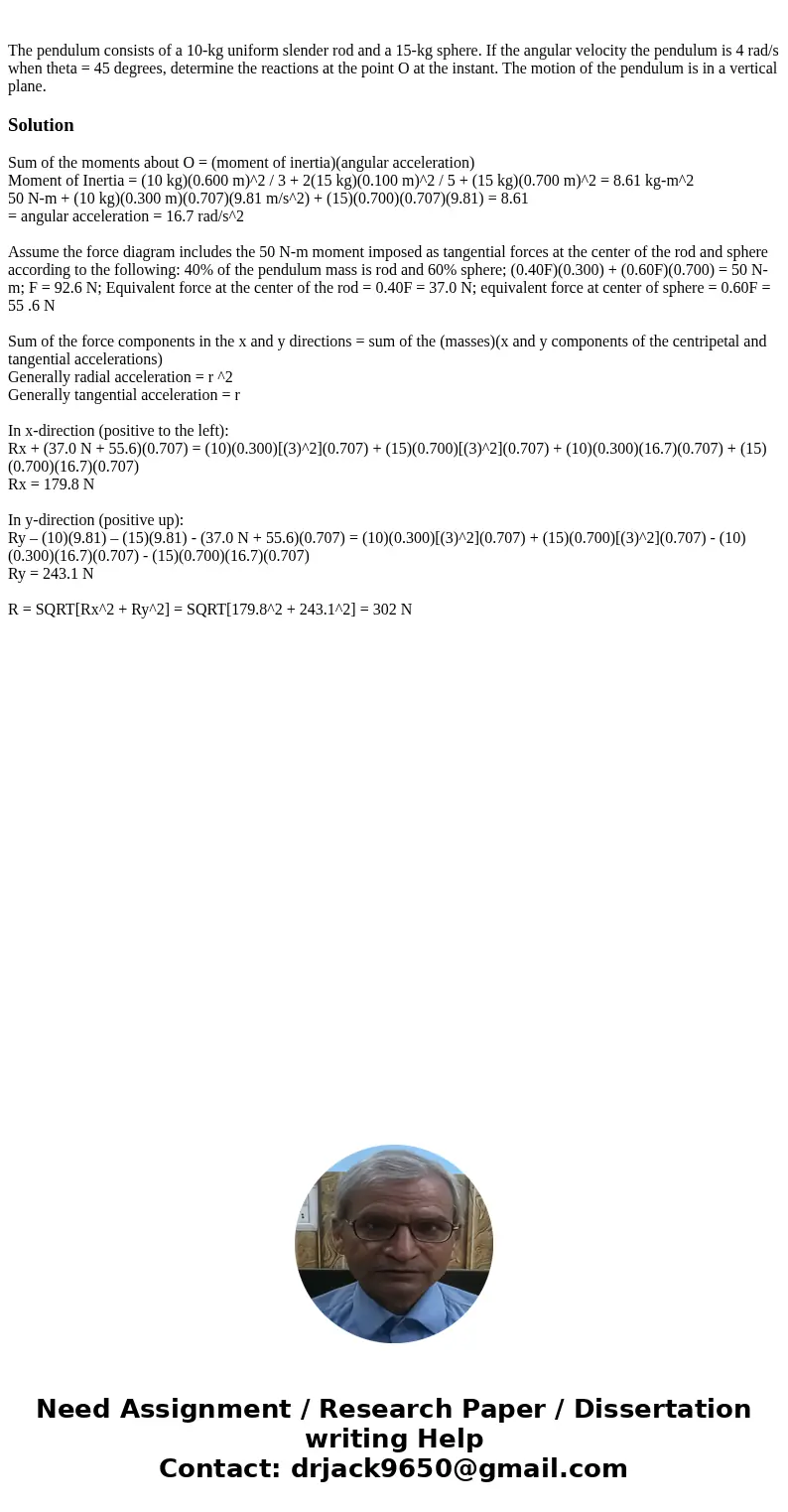The pendulum consists of a 10kg uniform slender rod and a 15
Solution
Sum of the moments about O = (moment of inertia)(angular acceleration)
Moment of Inertia = (10 kg)(0.600 m)^2 / 3 + 2(15 kg)(0.100 m)^2 / 5 + (15 kg)(0.700 m)^2 = 8.61 kg-m^2
50 N-m + (10 kg)(0.300 m)(0.707)(9.81 m/s^2) + (15)(0.700)(0.707)(9.81) = 8.61
= angular acceleration = 16.7 rad/s^2
Assume the force diagram includes the 50 N-m moment imposed as tangential forces at the center of the rod and sphere according to the following: 40% of the pendulum mass is rod and 60% sphere; (0.40F)(0.300) + (0.60F)(0.700) = 50 N-m; F = 92.6 N; Equivalent force at the center of the rod = 0.40F = 37.0 N; equivalent force at center of sphere = 0.60F = 55 .6 N
Sum of the force components in the x and y directions = sum of the (masses)(x and y components of the centripetal and tangential accelerations)
Generally radial acceleration = r ^2
Generally tangential acceleration = r
In x-direction (positive to the left):
Rx + (37.0 N + 55.6)(0.707) = (10)(0.300)[(3)^2](0.707) + (15)(0.700)[(3)^2](0.707) + (10)(0.300)(16.7)(0.707) + (15)(0.700)(16.7)(0.707)
Rx = 179.8 N
In y-direction (positive up):
Ry – (10)(9.81) – (15)(9.81) - (37.0 N + 55.6)(0.707) = (10)(0.300)[(3)^2](0.707) + (15)(0.700)[(3)^2](0.707) - (10)(0.300)(16.7)(0.707) - (15)(0.700)(16.7)(0.707)
Ry = 243.1 N
R = SQRT[Rx^2 + Ry^2] = SQRT[179.8^2 + 243.1^2] = 302 N

 Homework Sourse
Homework Sourse